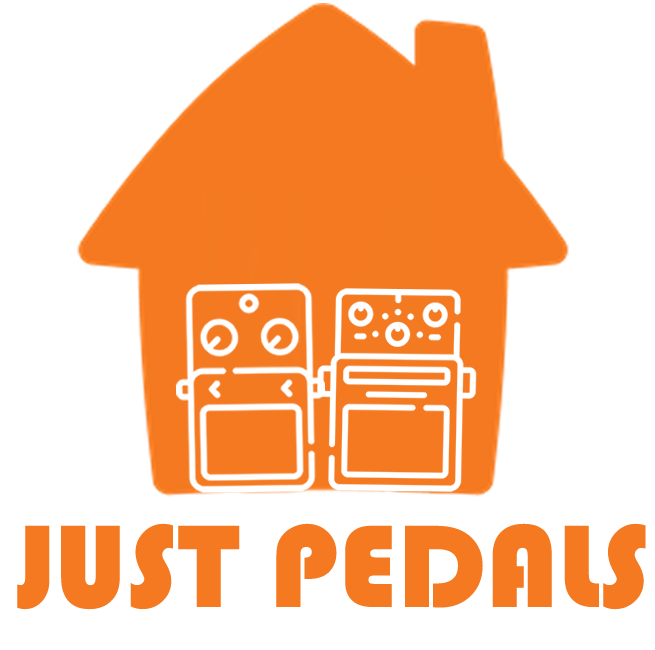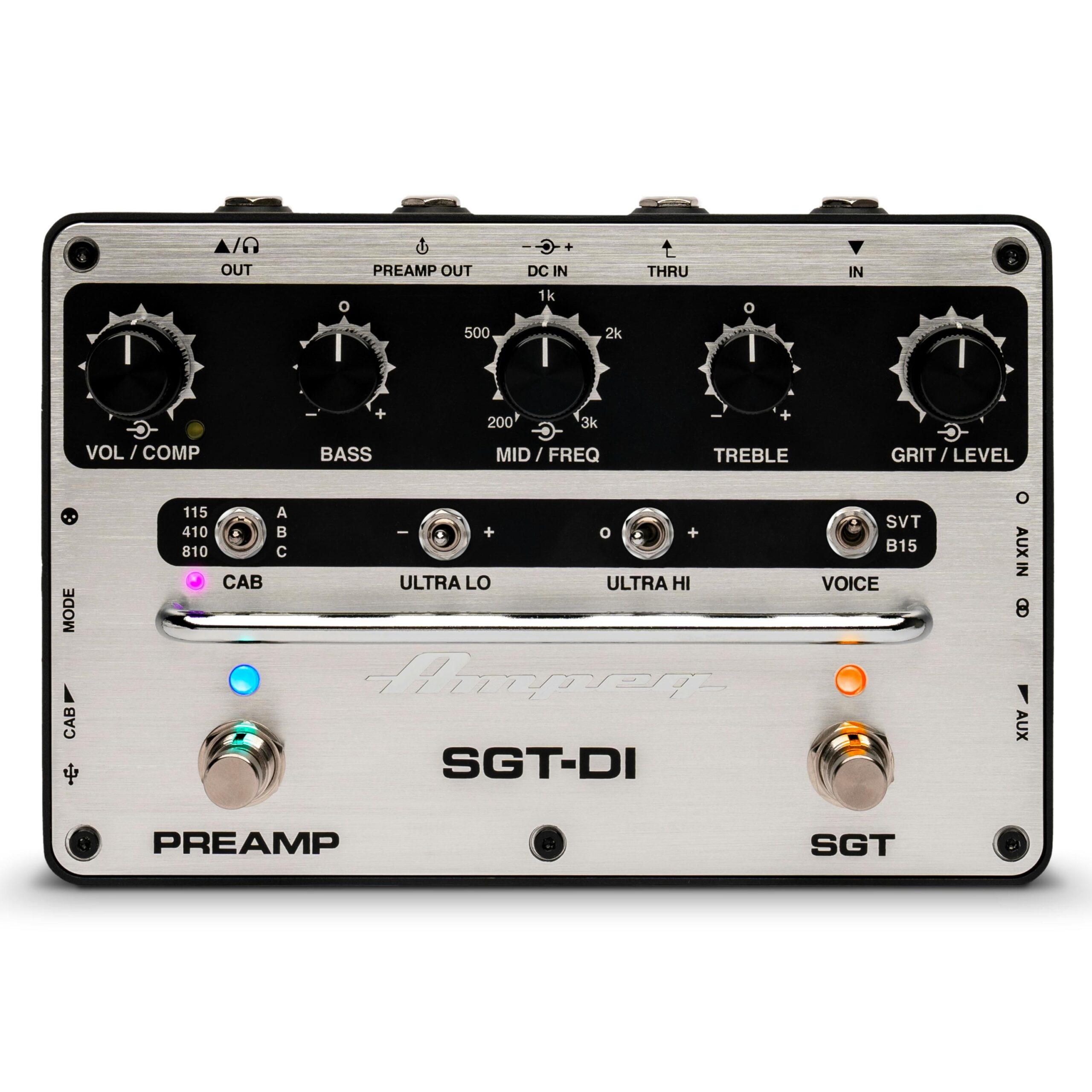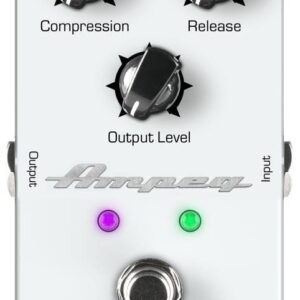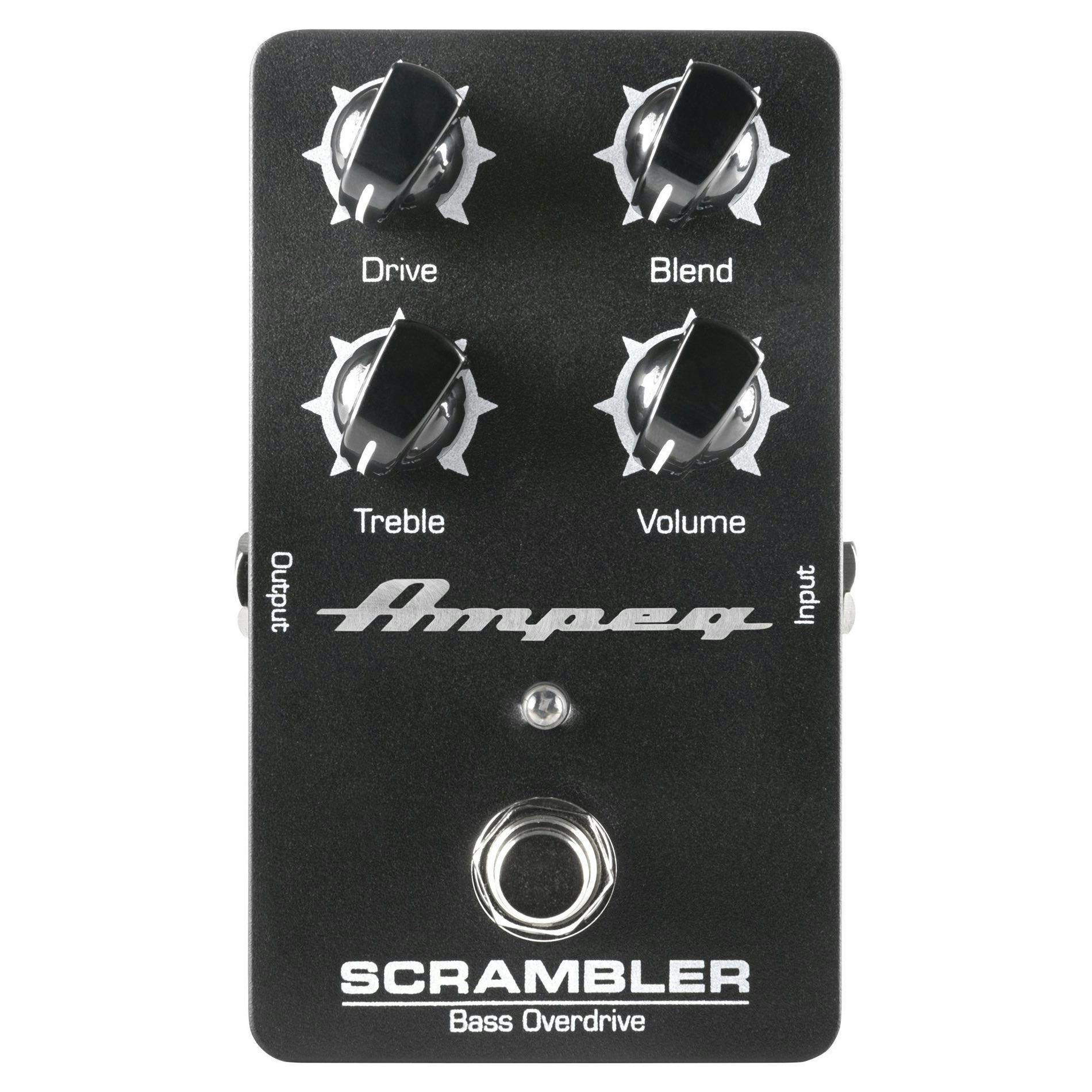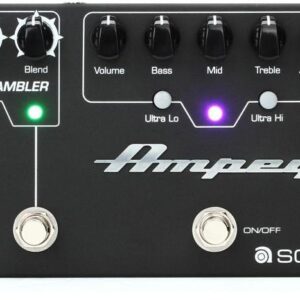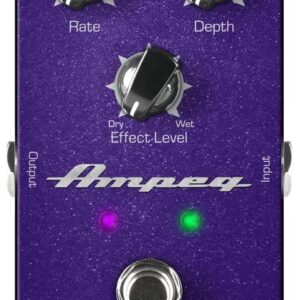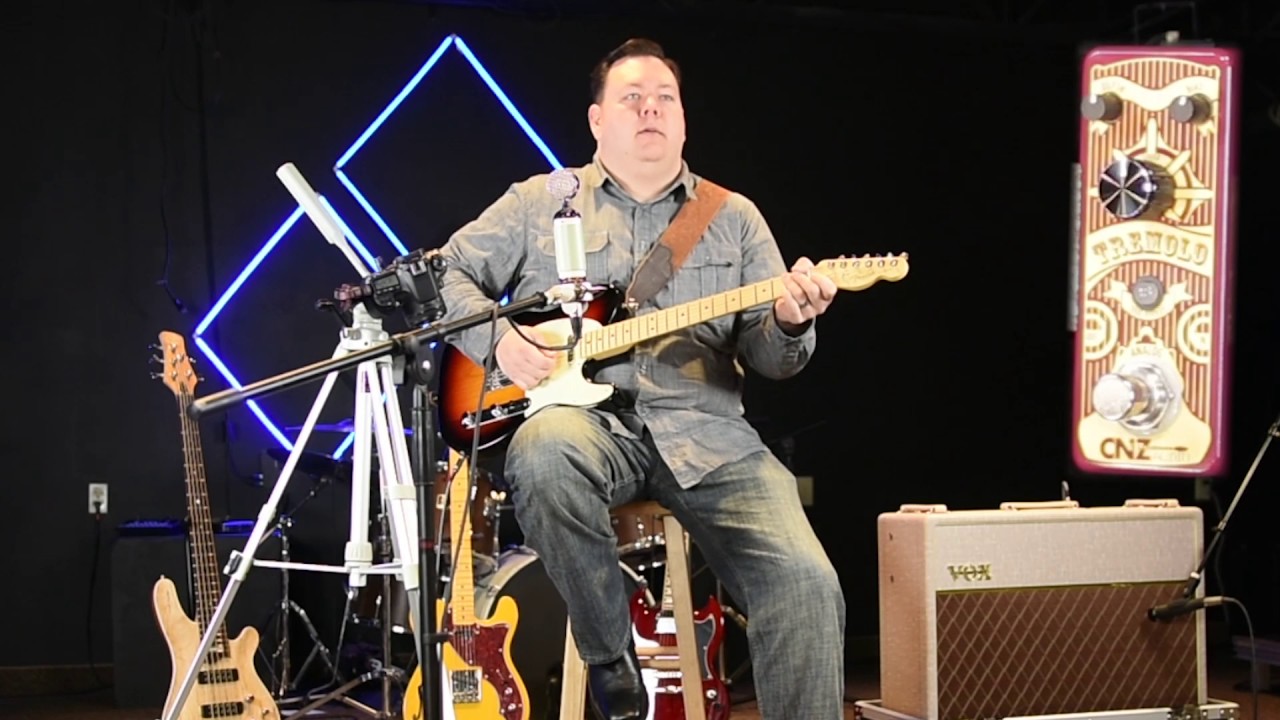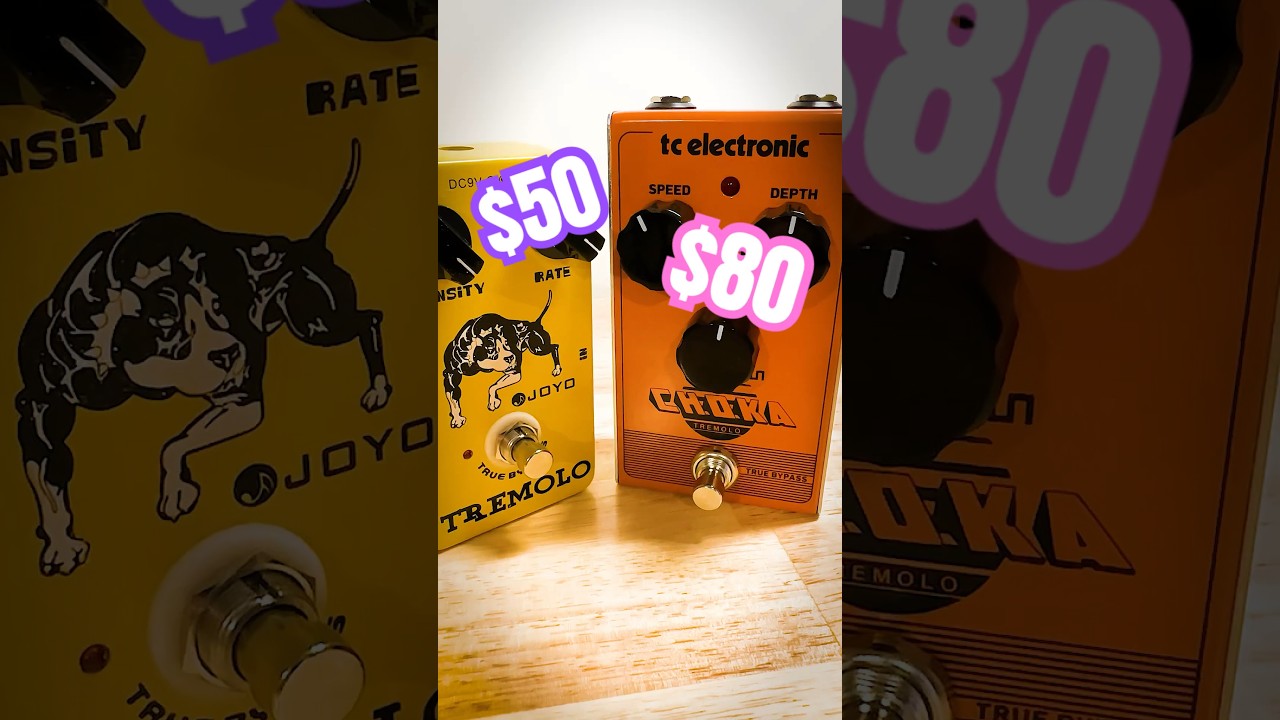Description
The Ampeg SGT-DI Bass Preamp and DI Pedal with EQ Compressor Cab Sim IR is currently retailing at £349 and it is in stock. Available to be delivered to you by post direct (some charge may apply).The team at Just Pedals think that Ampeg nailed it with the Ampeg SGT-DI Bass Preamp and DI Pedal with EQ Compressor Cab Sim IR.
Ampeg call their SGT-DI Preamp and DI "the all-in-one bass box" because it gives modern bassists an entire rig in a single, compact pedal! The SGT-DI delivers an enhanced Super Grit Technology (SGT) overdrive circuit featuring iconic Ampeg SVT and B15 voices, versatile 3-band EQ (now with sweepable mids), 3-way Ultra-Hi and Ultra-Lo switches, a variable compressor, and an aux/headphone section. The Ampeg SGT-DI Preamp and DI pedal can therefore serve as a "command centre" for your pedalboard, allowing you to plug in and play anywhere!
The SGT-DI Preamp and DI also introduces the first IR Loader/Cab Simulator from Ampeg. You can choose from three classic factory cabs or up to three cabs of your own by using the free Ampeg IR Loader application. Combining time-tested Ampeg tone with modern capabilities, the SGT-DI demonstrates Ampeg's commitment to honouring their legacy while also serving the needs of contemporary players.
Key Features
- 3-Band EQ with a concentric, sweepable mid-range frequency selector.
- Super Grit Technology (SGT) circuit that provides more of the warm, gutsy growl that defines Ampeg tone!
- All-analogue SVT & B15 voicing circuit works as an enhancement to the SGT circuit, replicating the grit and harmonic distortion of these two iconic amplifiers when played at different levels.
- Onboard IR loader/cab simulator lets you choose from three classic factory cabs (Heritage B15, Heritage SVT-410HLF, and vintage "square-back" SVT810), or up to three cabs of your own by using the free Ampeg IR Loader application. Volume for the IR loader is controlled via a push-and-release control on the side of the pedal.
- Ultra-Hi and 3-way Ultra-Lo switches allow for extra tone-tailoring.
- Built-in variable 10:1 compressor keeps your tone dynamic and level.
- Aux/headphone section, which includes a push-and-release volume control.
- Balanced XLR and 1/4" line outputs with a ground lift switch.
Specifications
- Size (H x W x D): 2.5 x 7.4 x 4.9 inches / 65 x 189 x 126 mm
- Weight: 1.9 lbs / 0.85 kg
We have new and used Ampeg musical equipment available on our website for fast direct delivery from sellers across the UK & Europe.
Ampeg is legendary in the world of bass amplification, known for its deep, rich tones and unmistakable vintage warmth. From the iconic SVT series, favoured by professional bassists worldwide, to modern compact options like the Rocket Bass combos, Ampeg delivers powerful, stage-ready sound with that signature punch. Whether you’re after classic tube-driven grit or clean, articulate low-end, Ampeg remains a go-to choice for bass players across all genres.
In the realm of guitar effects, “bass” pedals are designed specifically for bass guitars, enhancing their low-end frequencies and allowing bassists to shape their tone and explore new sonic possibilities. These pedals cater to the unique characteristics of the bass guitar and provide various effects to modify its sound. For instance, overdrive and distortion pedals add gain and saturation, giving the bass a gritty or distorted tone. Compression pedals help even out dynamics by smoothing out the volume of loud and soft notes, resulting in a consistent and punchy sound. EQ pedals enable bassists to sculpt their tone by boosting or cutting specific frequencies, allowing them to emphasize certain parts of the sound or compensate for room acoustics.
Other popular bass effects include envelope filters, which produce dynamic filter sweeps in response to playing dynamics, adding rhythmic groove to bass lines. Octave pedals generate harmonies one or two octaves below the original note, creating a fuller and more powerful sound. Modulation effects like chorus, flanger, and phaser add depth and movement by modulating the pitch or phase, creating swirling textures and enhancing the overall presence of the bass line. Lastly, delay and reverb pedals introduce ambience and spatial depth, adding echoes and reflections that enhance the sense of space in music. These diverse effects allow bassists to expand their sonic palette and express their creativity in numerous ways.
A cab, short for cabinet, refers to a speaker cabinet used with guitar or bass amplifiers. The cabinet houses one or more speakers that produce the sound generated by the amplifier. Guitar cabinets come in various sizes and configurations, often featuring 1×12, 2×12, 4×12, or other speaker arrangements, each providing different tonal characteristics, volume capabilities, and projection.
The cab plays a crucial role in shaping the overall sound of an amplifier. Larger cabinets with more speakers typically produce greater volume, bass response, and fuller sound, while smaller, more compact cabs can provide a more focused and tight tone. The choice of cab, combined with the amplifier and speaker types, can significantly impact the clarity, warmth, and distortion characteristics of a player’s tone. Popular brands like Marshall, Fender, and Orange are well-known for their iconic cab designs.
A compressor is an essential tool in shaping your sound, particularly for controlling the dynamic range of your instrument. It works by reducing the volume of louder sounds while boosting quieter ones, resulting in a more balanced and consistent tone. This effect can add sustain to notes and smooth out any harsh volume spikes, making the overall sound more polished and professional.
When used on guitar or bass, a compressor can tighten up your performance and help your instrument sit better in a mix. Controls on a typical compressor pedal include Threshold, Ratio, Attack, and Release, which allow for precise control over how much compression is applied and how it reacts. Popular compressors include the MXR Dyna Comp, Keeley Katana Blues Driver, and Electro-Harmonix Soul Preacher.
An EQ (equaliser) pedal allows guitarists to shape their tone by adjusting the levels of different frequency ranges. Most EQ pedals feature multiple frequency bands—typically graphic EQs with sliders for specific frequencies or parametric EQs with adjustable frequency selection and Q width. These pedals can be used to cut unwanted frequencies, boost mids for solos, tighten bass response, or tame harsh treble. EQ is especially useful for fine-tuning distortion, compensating for tonal differences between guitars, or adapting to different amplifiers. Popular EQ pedals include the Boss GE-7, MXR Ten Band EQ, and Source Audio EQ2, making them an essential tool for tone control.
Just Pedals is a new Guitar Effect Pedals Marketplace – We feature new and used Guitar Effect pedals from different sellers, to purchase online from the UK.
A preamp pedal boosts the guitar signal to line level before it reaches an amplifier, shaping the tone and adding warmth, character, or gain. Preamp pedals can be used to simulate the sound of an amplifier’s preamp stage, providing overdrive, distortion, or clean tone shaping. They can also be used to drive amplifiers harder or to add tonal colour and EQ adjustments. Some preamp pedals are designed to mimic classic amp sounds, such as those from Fender, Marshall, or Vox, while others offer more modern, transparent tones. Well-known preamp pedals include the Tech 21 SansAmp, Electro-Harmonix Soul Food, and MXR M81 Bass Preamp, making them a useful tool for tone shaping in both live performances and studio work.
Just the latest videos
Just related products
£39.76
Inspired by the world-famous studio compressor guitar effects pedal. Compression effect pedal with rich parameter knobs for dynamic accommodation. No matter in the clean and overdrive, Source Comp has excellent feel and can better reflect your playin…
read more
£69.99
One-Stop Gig Solution for Bass Players with Main Effects needed Analog Preamp with 3-Band EQ recreates the Legendary Ampeg Style Tone, from Dynamic Clean to Classic Rock Bass Sound Compressor, Boost, Fuzz Modules ready for Most Common Use in Bass Pla…
read more
£49.99
Analog preamp and digital reverb guitar pedal Built-in Notch Filter and MUTE with gain and frequency range adjustment can quickly eliminate whistling or on the sound is further shaped in detail High impedance input and XLR balanced output Special dsi…
read more
£24.98
🎸 5 Band EQ pedal, Each band provides a range of ±18dB to help you find your favorite tone。 Includes the frequency bands: 100Hz, 250Hz, 630Hz, 1.6kHz and 4kHz ±18dB the adjustable range is wide. 🎸 Excellent tone EQ Pedal electric guitar effect pedal …
read more
£59.00
Clean 26 dB Boost: Deliver a pristine, distortion-free boost of up to 26 dB to highlight solos and nail those killer riffs Dynamic Gain Control: Use the gain knob to add just a hint—or heaps—of grit, expanding your tonal palette with precision Active…
read more
